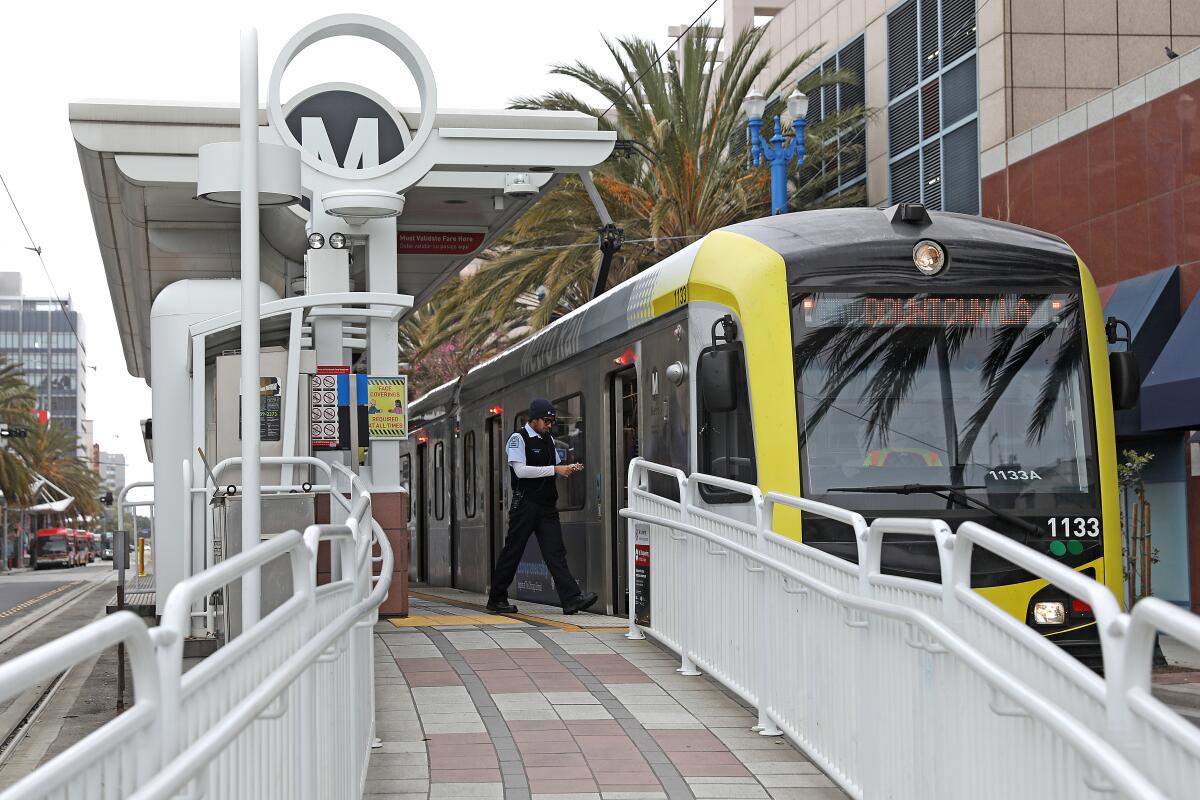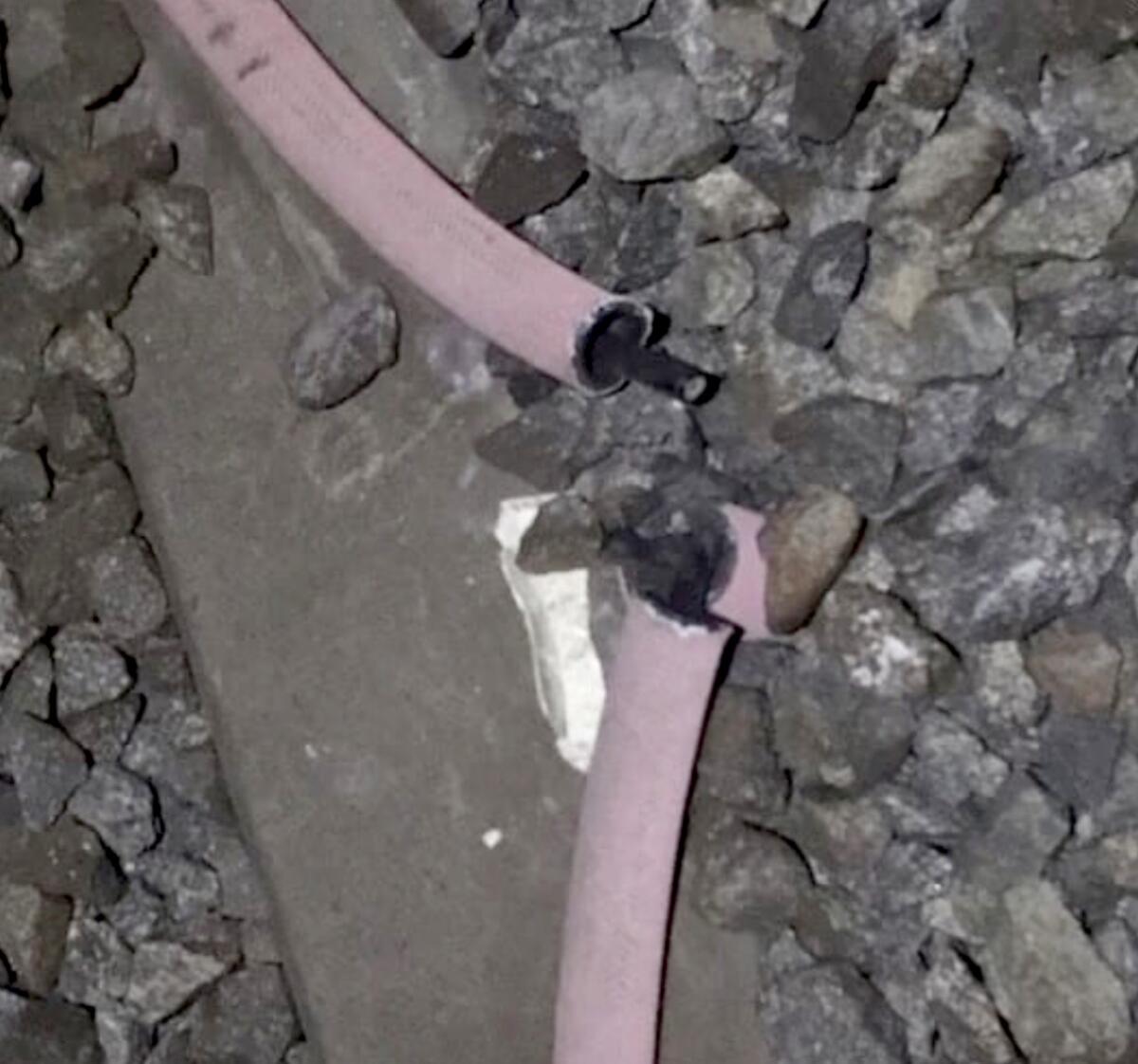Copper wire thefts on the rise, causing delays for Metro’s rail lines

A section of Los Angeles’ Metro rail system that extends from Norwalk to the South Bay was delayed this week because of the theft of copper wires used to power the rail cars, the latest in a surge of thefts of the valuable wiring.
The thefts have caused disruptions for the rail system, which serves more than 5 million riders a month.
In 2022, Metro reported more than 60 copper wire thefts, mainly affecting the Metro A Line, formerly known as the Blue Line. So far this year, there have been 21 thefts, mainly on the C Line, formerly the Green Line, Dave Sotero, a Metro spokesperson, said in an email. These thefts are happening on the above-ground sections of the light rail lines.
Copper wire thieves are also targeting lights on Los Angeles streets and freeways. In the last four years, Caltrans has spent about $24 million on repairs, according to NBC News.
The thefts from the rail system can cause service delays and interruptions for passengers, forcing Metro to use buses, reduce train speeds or rely on a single track, said Errol Taylor, Metro’s deputy chief operations officer.
The thefts cost the transit agency between $8,000 and $15,000 each time to repair, Taylor said.

There are two types of cables being stolen, he said. One type is larger cables that have the most copper and are used to provide traction power to the trains. Stealing the cables can cause fires or prompt the crossing gates to go down and stay down for extended periods, he said.
The other type is smaller cables called track circuit cables. These are part of the train’s control system, and losing the cables can affect the ability to brake, detect trains on the track circuit, signal the trains on how fast they can go and operate the gate crosses, Taylor said.
“Trains cannot run without this equipment,” Sotero said in the email.
Thieves run the risk of being hit by trains when they attempt to steal the wire, Sotero added.
According to the FBI, thieves steal the copper to sell for profit to recyclers.
As one way to stop the thefts, Metro is working to encase its copper wires in concrete. The encasing is almost completed on the A Line and is going to happen on all light rail lines, Taylor said. According to a January board report, Metro plans to have fully encased the copper wires by the end of the year.
Additionally, Metro has added monitoring mechanisms and increased security patrols, Sotero said. He added that law enforcement is in contact with scrap yards and recycle centers that buy copper wires to reinforce that police are pursuing the thieves and those who are enabling them.
Metro and Caltrans aren’t the only agencies dealing with copper wire thefts.
In April, San Joaquin County reported a 139% increase in copper wire thefts over four months, according to ABC. Many of the wires targeted are from fiber optic cables, and one theft in the county left the 911 center unable to receive calls, ABC reported.
Times staff writer Rachel Uranga contributed to this report.
More to Read
Sign up for Essential California
The most important California stories and recommendations in your inbox every morning.
You may occasionally receive promotional content from the Los Angeles Times.











